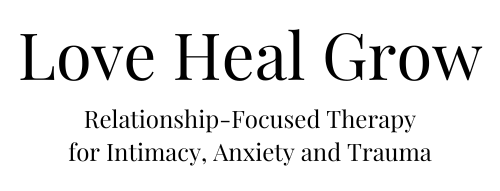
When most people think of a love story, they think of a couple meeting, falling in romantic love, getting married, and living happily ever after. It’s a trope that’s been around since… well, basically since the dawn of human history (even if that whole “marriage” thing has changed a lot over the years). But not everybody feels this way! Not everybody feels romantic attraction or sexual attraction, and some people don’t feel either– but folks like this still seek intimacy and love, even if it isn’t the “traditional” type of attachment. Today, we’re going to talk about asexuality, aromanticism, and how people who don’t feel romantic attachment or sexual attraction feel intimacy.
What Does It Mean To Be Asexual?
Asexuality refers to a sexual orientation where individuals do not experience sexual attraction to others. Unlike celibacy, which is a conscious choice to abstain from sexual activity, asexuality is an inherent aspect of a person’s identity. It’s crucial to recognize that asexuality is just as valid and natural as any other sexual orientation.
People who identify as asexual (and often call themselves “aces”) may still experience romantic attraction, forming emotional connections and engaging in romantic relationships. The absence of sexual attraction, however, does not diminish the depth or significance of these connections. Asexual individuals may define their romantic orientation separately, such as heteroromantic, homoromantic, biromantic, or panromantic, depending on the gender or genders to which they are romantically attracted. That’s if they feel romantic attraction at all– many asexuals are also aromantic.
It’s important to remember that not all asexual people are aromantic, and not all aromantic people are asexual. However, there is significant overlap between the two. People who don’t feel romantic or sexual attraction often refer to themselves as “aroaces.” (And, in case you were wondering- if you want a term for somebody who isn’t asexual, the term is allosexual.)
One of the key aspects of asexuality is the spectrum it encompasses. Asexuality is not a one-size-fits-all category, and individuals may experience their asexuality in lots of different ways. Some may identify as completely asexual, while others may identify as demisexual, experiencing sexual attraction only after forming a strong emotional bond. Some asexual people will happily have sex if their partner initiates. They might not feel the same type of arousal, but they may want to participate to please their partner, or because they enjoy the physical sensation. Other asexual people are sex-repulsed and don’t want to have any sexual contact whatsoever. Some asexual people are fine with some acts, but not with others. There are a lot of different ways to be asexual!
What Does It Mean To Be Aromantic?
Aromanticism is a romantic orientation characterized by the absence or limited experience of romantic attraction. Unlike asexuality, which is about sexual attraction, aromantic individuals may not feel the desire for romantic relationships in the same way that society often expects. It is essential to understand that being aromantic is a valid and natural way of experiencing one’s emotions and connections with others.
Individuals who identify as aromantic may form deep and meaningful connections with others, but these connections do not necessarily involve romantic feelings. It is crucial to recognize that aromanticism (like asexuality) exists on a spectrum, and people may identify as completely aromantic or as demiromantic, experiencing romantic attraction only after forming a strong emotional bond.
One common misconception is that aromantic individuals are incapable of forming meaningful connections or experiencing love. This is far from the truth. Aromantic individuals may experience platonic love, familial love, and other non-romantic forms of connection that are just as profound and valuable.
Redefining Intimacy
While aromantic people might not feel romantic love and asexual people might not feel sexual attraction, that doesn’t mean they don’t have a desire for intimacy and connection. It’s just that for them, sex and romance aren’t as important to connection as they are for other people.
One way to think about this is to look at what intimacy actually means for you. For some people, intimacy is overtly sexual and romantic; for others, it might be cherished time spent with someone you trust, or getting to know someone well enough to be vulnerable around them.
For asexual and aromantic individuals, intimacy doesn’t necessarily revolve around sexual or romantic elements. Instead, it’s about cultivating emotional, intellectual, and platonic connections. Redefining intimacy allows for a broader and more inclusive understanding of deep human connections.
Communication is Key
Open and honest communication is the foundation of any meaningful relationship. For asexuals and aromantics, expressing your orientation and discussing individual needs and boundaries is crucial. This transparency helps establish a foundation of trust and understanding, paving the way for the creation of unique forms of intimacy.
Exploring Platonic Love
Asexual and aromantic individuals often experience platonic love in profound and fulfilling ways. Platonic connections can be just as rich and meaningful as romantic ones, providing a strong basis for lasting relationships. Embracing and celebrating platonic love is an essential aspect of creating intimacy beyond conventional norms.
Shared Activities and Hobbies
Building intimacy can be facilitated through shared activities and hobbies. Engaging in pursuits that both individuals enjoy fosters a sense of connection and shared experience. Whether it’s exploring new hobbies together or deepening existing interests, shared activities can strengthen bonds.
Emotional Support and Understanding
Asexuality and aromanticism do not diminish the need for emotional support and understanding. Creating a safe space where individuals can share their thoughts and feelings without judgment is essential. Emotional intimacy flourishes when there is mutual understanding, empathy, and validation.
Non-Romantic Touch
Physical touch is a powerful means of connection, and for asexual and aromantic individuals, it doesn’t have to be romantic. Non-romantic touch, such as hugs, cuddling, or holding hands, can be expressions of affection and closeness without the need for sexual or romantic undertones. However, you do need to be careful with communication here. What an asexual person might perceive as platonic touch may be understood as sexual by an allosexual. Make sure that everybody’s on the same page and happily consenting to touch.
Use Your Own Labels… or No Labels At All!
Asexuals and aromantics have the freedom to define their relationships on their own terms. Creating customized relationship labels that reflect the nature of the connection helps set expectations and boundaries. Whether it’s a queerplatonic relationship, a deep friendship, or another personalized term, the key is mutual agreement and understanding.
Building a Supportive Community
Creating intimacy extends beyond individual connections. Building a supportive community of like-minded individuals provides a network of understanding and acceptance. Sharing experiences, advice, and insights within a community fosters a sense of belonging and reduces feelings of isolation. The internet has made this much easier for a lot of asexual and aromantic people. By going online and sharing your experiences, and talking with others who have had similar experiences, asexuals and aromantic people can expand their community and connections.
Basically, creating intimacy for asexual and aromantic individuals involves embracing diverse forms of connection and understanding. It involves taking things at your own pace and using the terms that make you happy. By redefining intimacy, communicating openly, exploring platonic love, engaging in shared activities, providing emotional support, incorporating non-romantic touch, customizing relationship labels, and building a supportive community, aros and aces can forge deep and fulfilling connections that go beyond traditional romantic or sexual expectations.
If you’re an aro, an ace, or anybody else having issues with intimacy and communication, don’t worry– you’re not alone. Lots of people struggle with expressing their need for intimacy, and that’s one of the places where Love Heal Grow can help. Schedule with one of our relationship experts today to talk about how you can create intimacy in your relationships, no matter what kind of relationships they are.
























